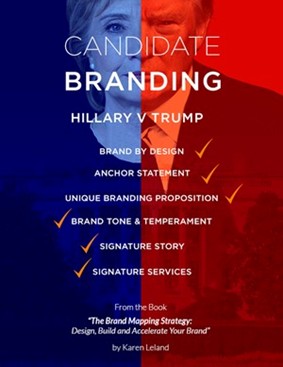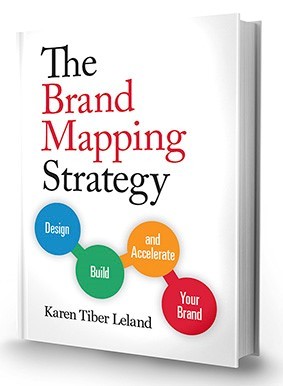Digital publishers need to quit counting clicks and instead engage audiences to prosper
It’s no longer just about eyeballs.
As the digital publishing world evolves and becomes more sophisticated, advertisers want to capture the minds of online audiences as well.
And that means publishers making the transition from print products to digital-first strategies need to focus not just on the breadth of audience reach, but on audience engagement.
Without the right process, people and platforms in place, these publishers are bound to miss the target and fail.
A shift in thinking is crucial to success.
In the early days as print publications moved to the web, one of the key metrics publishers and advertisers cared about was page views — how many sets of eyes scanned a page, even if only for a second or two. They effectively took the same measurement tool they used for print — reach, which was measured in part by circulation — and applied it to the digital landscape.
In the print model, publishers earn revenue from the reach they have in their distribution channels. Their reach allows them to sell advertisements that exist alongside readable content such as news stories.
The challenge that many publishers now face is that reach is outdated in today’s digital world. It doesn’t take into account how many people actually read or interacted with the content or advertisement. A growing number of advertisers are only willing to pay for content that was actually consumed – content where the user has engaged with it. They’re strong believers that the best indicator of content quality isn’t how many people see it, but how much time they spend with it.
The shift from media distribution to media consumption dramatically lowers revenue capacity and puts significant pressure on publishers to deliver a compelling value proposition to advertisers.
Consider publishers like The Financial Times and Say Media, which both clearly understand the relevance of engaged time and have placed it at the center of their value proposition to advertisers and users. Like a growing number of publishers, they are showing they understand that just boosting traffic isn’t enough because not all traffic converts.
As a user becomes increasingly engaged, they are more willing to pay for a digital publisher’s content or services. A recent MIT Sloan Management Review report, titled “Turning Content Viewers Into Subscribers,” asserts that engagement is the key to turning casual readers into paying subscribers, and the ladder model as an effective framework to boost engagement over time. Using what the research dubs the “ladder of participation,” publishers can prompt site users to progressively accelerate their onsite engagement to become paying subscribers.
While the engagement-focused model is beginning to resonate more strongly with a larger number of publishers, not all of them are making the transition as efficiently as they could.
Implementing an engagement model promotes readers to return, register and subscribe – and this is good for the bottom line. Engagement is driven by a commitment to identifying who your audience is and giving them what they want, when they want it. Not by spraying and praying on social media, which is the path chosen by many publishers today.
Facebook is now being used by many publishers to solve their digital publishing dilemma of increasing engagement with their community, website, brand and content creators. Publishers are handing over this huge opportunity to a platform that has its own business goals, none of which are aligned with the publishers’ – Facebook’s commitment is to itself. It is looking to solve its own audience development challenge of creating interactions with its brand, its community and its content. Facebook’s recent change to its algorithm — placing greater priority on posts from family and friends than on news feeds and posts from publishers — confirms this. The social media giant acknowledged this when it announced the change that “this update may cause reach and referral traffic to decline for some Pages.”
Digital publishers who rely too heavily on Facebook can count themselves among those who’ll see their reach dramatically reduced.
The solution comes down to owning your engagement platform in order to take full advantage of your audience and drive engagement to meet your own business goals.
When publishers commit to engagement and take ownership of their channels, and not rely on social media that has its own agendas, they can focus their efforts on increasing and owning their audience’s interactions, connections and relationships. This is the first step in moving to a process and platform that is specifically built to work in today’s engagement driven digital world.
About the Author
Jesse Moeinifar, CEO of Viafoura is a serial entrepreneur with multiple successes spanning a range of industries, including real estate, digital media and software. Dedicated to disruption, Jesse is passionate about game-changing ideas and credits his accomplishments to assembling teams of smart individuals committed to solving challenging problems.

 Below is an examination of both candidates’ personal branding successes, challenges and resulting lessons for us all in six specific areas. The success of any brand — in business, politics or otherwise — boils down to how the brand performs across these six key dimensions. Each dimension, including exactly how each candidate fared therein as well as the correlated Personal Brand Takeaways, can help other enterprising professionals achieve in kind.
Below is an examination of both candidates’ personal branding successes, challenges and resulting lessons for us all in six specific areas. The success of any brand — in business, politics or otherwise — boils down to how the brand performs across these six key dimensions. Each dimension, including exactly how each candidate fared therein as well as the correlated Personal Brand Takeaways, can help other enterprising professionals achieve in kind. 2. Anchor Statement. What is the go-to description of who you are and what you do? This is sometimes referred to as an elevator pitch.
2. Anchor Statement. What is the go-to description of who you are and what you do? This is sometimes referred to as an elevator pitch. Karen Leland is CEO of Sterling Marketing Group, a branding and marketing strategy and implementation firm helping CEO’s, businesses and teams develop stronger personal and business brands. Clients include AT&T, American Express, Marriott Hotels, Apple Computer, LinkedIn and Twitter. She is the best-selling author of 9 books, including her most recent title,
Karen Leland is CEO of Sterling Marketing Group, a branding and marketing strategy and implementation firm helping CEO’s, businesses and teams develop stronger personal and business brands. Clients include AT&T, American Express, Marriott Hotels, Apple Computer, LinkedIn and Twitter. She is the best-selling author of 9 books, including her most recent title,  The firm hand of culture drives what, how, and why work gets done. Consequently, attempts to change established policies, processes, or practices will meet with a degree of cultural resistance. Therefore, the challenge for leaders becomes how to effectively implement needed change in spite of this resistance; especially if the foundational tenants of the organization’s culture must be preserved.
The firm hand of culture drives what, how, and why work gets done. Consequently, attempts to change established policies, processes, or practices will meet with a degree of cultural resistance. Therefore, the challenge for leaders becomes how to effectively implement needed change in spite of this resistance; especially if the foundational tenants of the organization’s culture must be preserved.
 Dr. Rhian Silvestro is Associate Professor of Operations Management at Warwick Business School. Rhian has conducted service management research in a number of large, leading edge organisations including retail companies, banks, transport companies, health services and call centres. She has publications in over ten international journals in the fields of service design, performance improvement and supply chain integration.
Dr. Rhian Silvestro is Associate Professor of Operations Management at Warwick Business School. Rhian has conducted service management research in a number of large, leading edge organisations including retail companies, banks, transport companies, health services and call centres. She has publications in over ten international journals in the fields of service design, performance improvement and supply chain integration. Aaron Wittersheim is an accomplished entrepreneur with more than 20 years of business and technology experience. He is currently Chief Operating Officer at
Aaron Wittersheim is an accomplished entrepreneur with more than 20 years of business and technology experience. He is currently Chief Operating Officer at